From Keds to Clip-Ins: 8 Lessons Learned on the Road to Road Cycling
From Keds to Clip-Ins: 8 Lessons Learned on the Road to Road Cycling
1. Cycling can be an expensive hobby—let alone an obsession—but there are ways to make it more accessible. If you’re buying your first road bike, start by browsing local shops for an entry-level model. Find out your size, ask plenty of questions and take a few test drives. Even if a brand-new bike isn’t in the budget, you’ll walk away knowing what fits and feels right. From there, head to Facebook Marketplace or other local listings and dig for a deal.
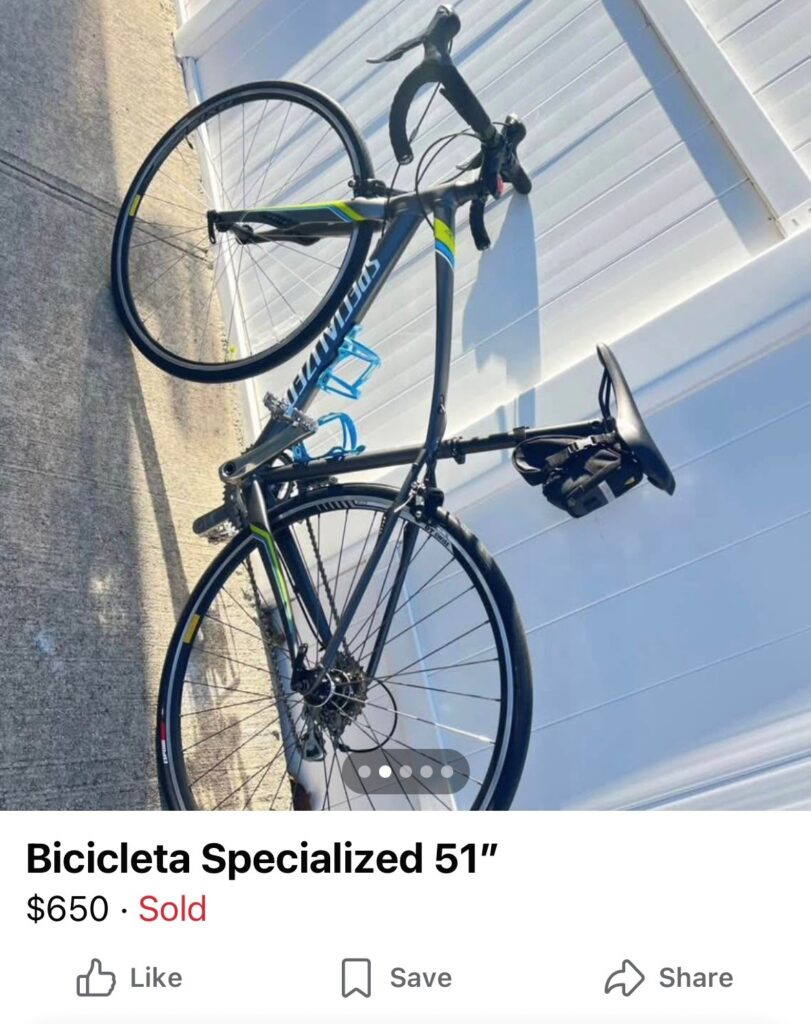
2. A good pair of padded bike bottoms goes a long way. After one long ride on your new bike, you’ll understand why cyclists wear what looks like diapers. The proper name for the butt padding is chamois (pronounced shammy) and it’s an essential component of your cycling attire—also known as your kit. Your rides should never be limited by pain in your tush, hips, back, neck or hands. Which brings us to #3…
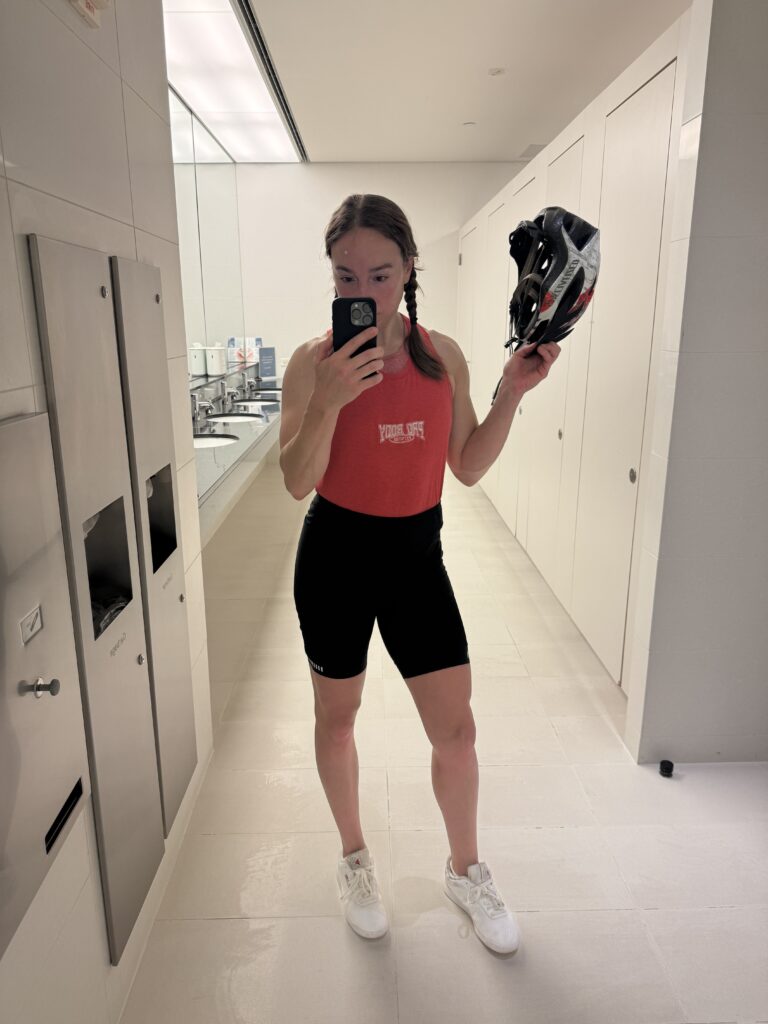
3. Get a professional bike fit. I had no idea bike fits were a thing, let alone that people make a profession out of them. It turns out there’s a lot more you can tweak on your bike aside from raising or lowering the seat and handlebars. Both can be adjusted forward and backward (cyclists say fore and aft) as well as tilted and rotated to better fit your body. The brakes and shifters on your bars and the cleats on your shoes can also be fine-tuned for better reach and alignment. You can even have your sit-bone width measured and opt for a different saddle altogether. These are all things you can learn and experiment with on your own, but if you have the means, a professional fit can be worth the investment. The goal is to improve comfort, efficiency and safety so you can better enjoy the ride.
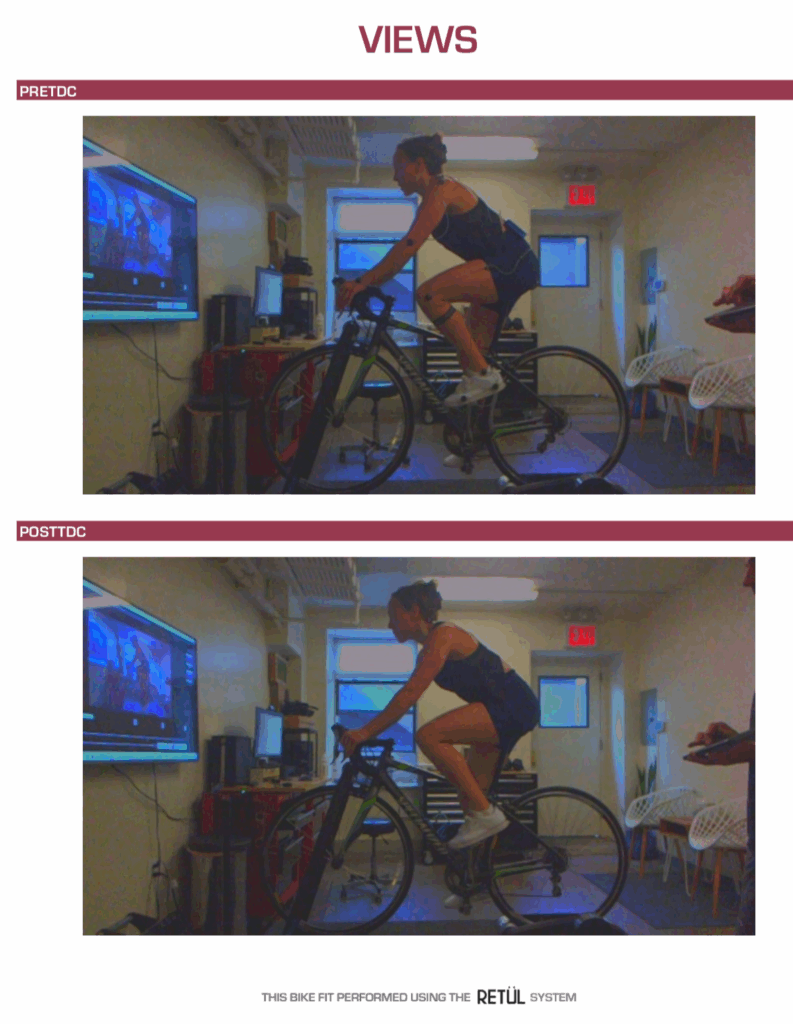
4. Get to know your gears. Understanding how your gears work and when to shift from one to another is key to handling different terrain. Proper gear use helps you maintain a smooth, efficient cadence whether climbing, descending or cruising. Most road bikes have between 20 and 24 gears, created from pairing different-sized front chainrings and rear cogs. A larger chainring paired with a smaller cog (high gear) makes pedaling harder but the bike faster, whereas a smaller chainring and a larger cog (low gear) does the opposite. Changing gears is controlled by the shifters on your handlebars. The left shifter moves the chain between the front chainrings for larger gear jumps, while the right shifter makes smaller jumps across the rear cogs. Get to clicking!
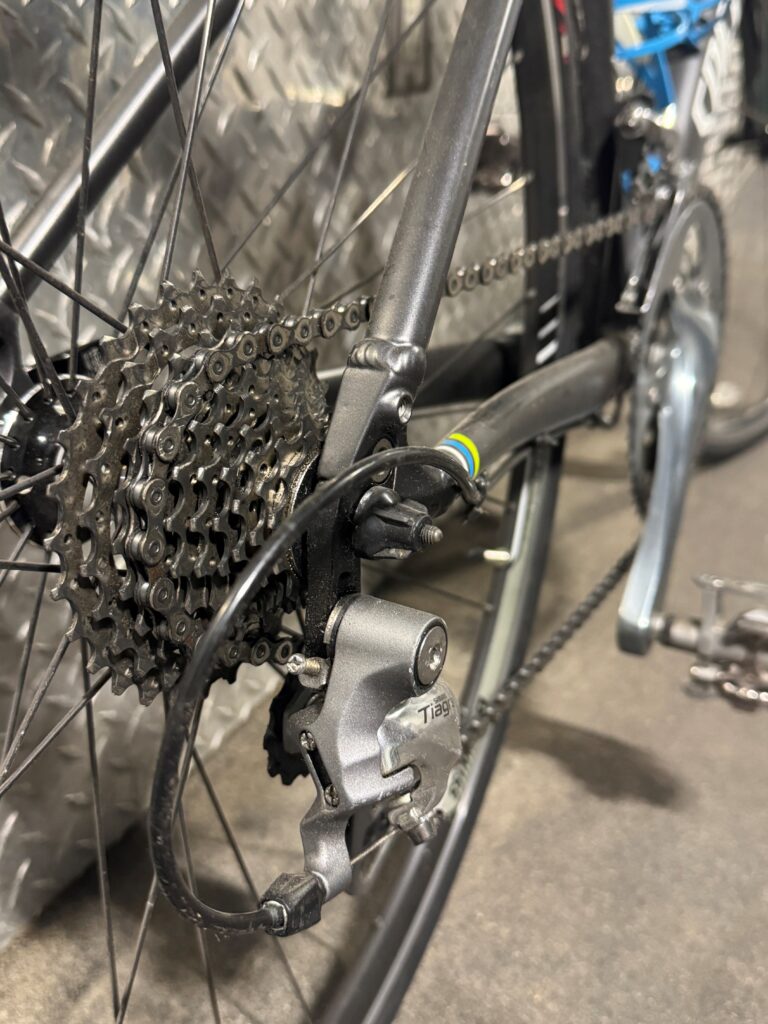
5. Find a group to ride with and learn the rules of the road. Cycling groups are popular and plentiful, much like run clubs, and cater to all levels from beginner to advanced. Join a group that matches your ability and learn from more experienced riders: how they mount and dismount, their pedaling technique, positioning and posture, along with how they signal and make callouts to communicate turns, stops and hazards. Riding with others not only teaches you group ride etiquette but also gives you confidence when you take to the road alone.
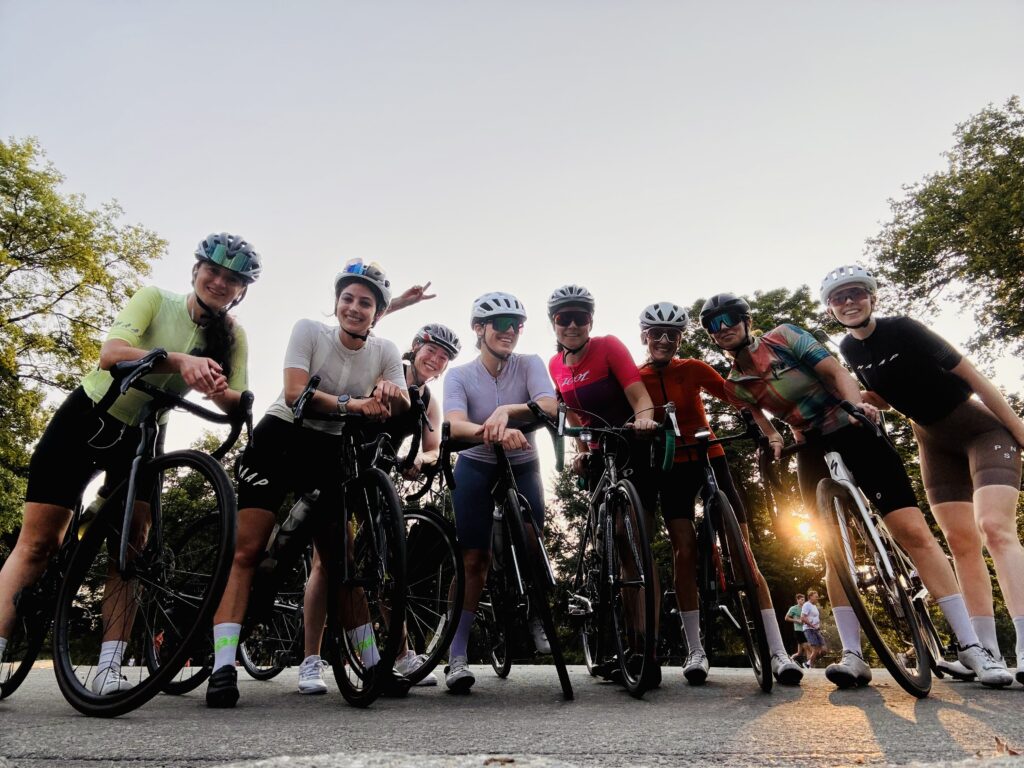
6. Looking for inspo? Dive into cycling YouTube. There’s a ton of content out there waiting to be consumed. For instance, Global Cycling Network drops new videos presented by former pro cyclists and journalists almost every other day and has racked up over a billion views. But if you’re in more of a lean-back mood, Tour de France: Unchained on Netflix will do the trick—it’s a behind-the-scenes documentary series that’s part drama, part testament to human grit and endurance. It’ll have you not only geared up to get back on the road but also choosing sides between Jonas and Pogačar (pronounced Po-GAH-char), and maybe even picking up a little French along the way.
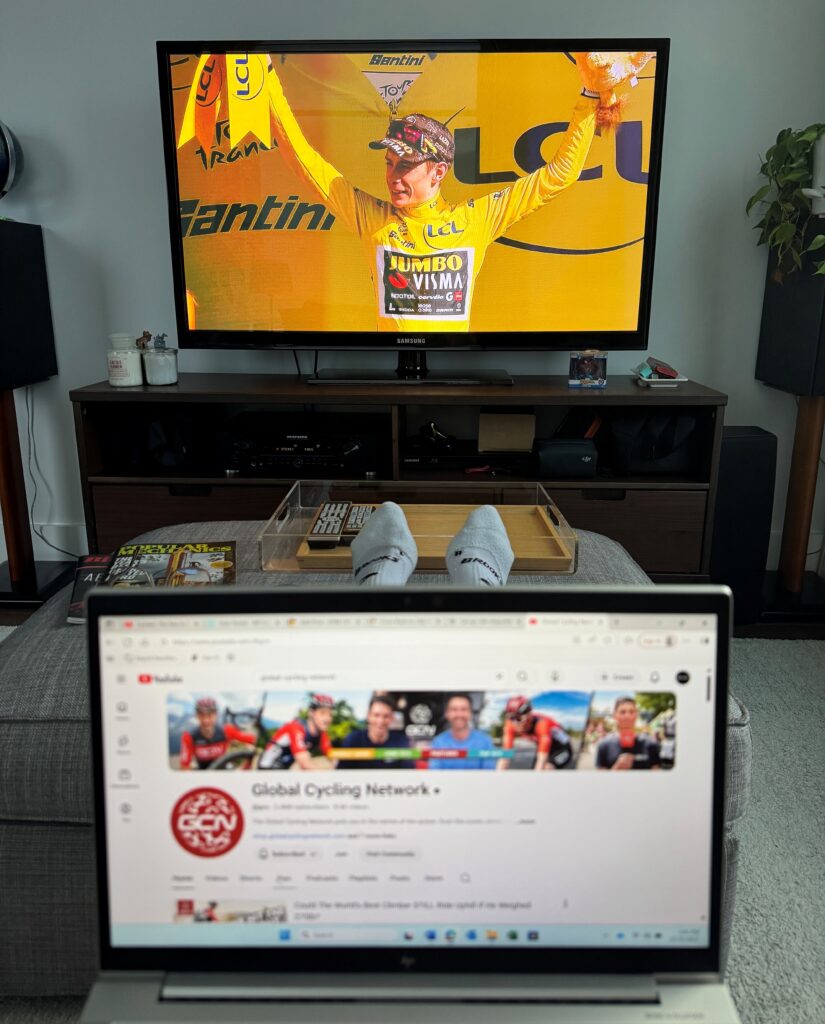
7. Get comfy cornering. Counterintuitively, cornering effectively means keeping the smoothest, straightest path possible through the turn. This means approaching the corner wide, leaning in toward the apex or the inside corner and then exiting wide. For first timers, keep your center of gravity low and look through the corner to where you want to go. Position your inside foot up at 12 o’clock and your outside foot down at 6 o’clock as you navigate the turn—this keeps your inside pedal from striking the ground and makes you look like a total badass (just like AI Betty in the picture below). Take corners slowly at first, gradually picking up speed as you gain experience and confidence.
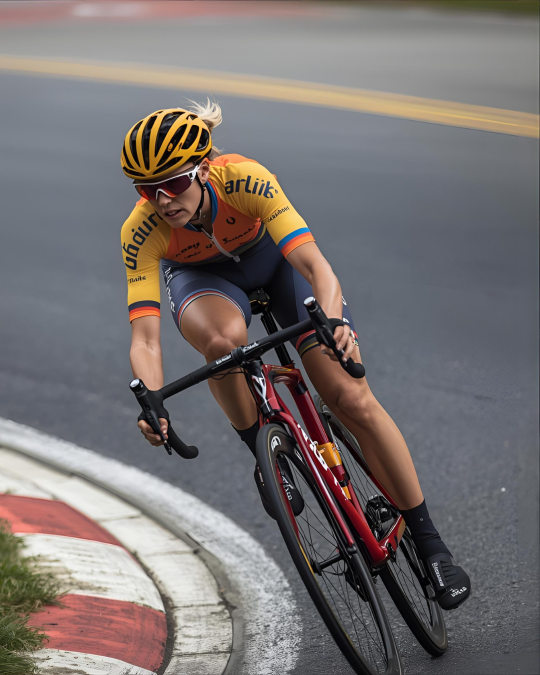
8. Ditch the squishy sneaks for a firm pair of clip-ins. There’s a reason all the pros ride clipless—which, confusingly, means they clip in. Quick explainer: when toe clips and straps were replaced by a new pedal system in the late 20th century, that system became known as “clipless” because the old toe clips were phased out. Ironically, now you have to clip in to ride clipless.
So what’s the advantage of wearing clip-ins over, let’s say, my $50 Reebok Princess shoes? The main benefit that I’ve noticed isn’t just being locked in, it’s feeling locked in and connected with the bike. My feet stay secured to the pedals instead of bouncing around with every gear shift or bump in the road. In turn, I feel more efficient and powerful with every revolution. Now, are clip-ins an absolute must for road cycling? Absolutely not. But they’re a natural next step if you want to turn your newfound pastime into a more serious pursuit.
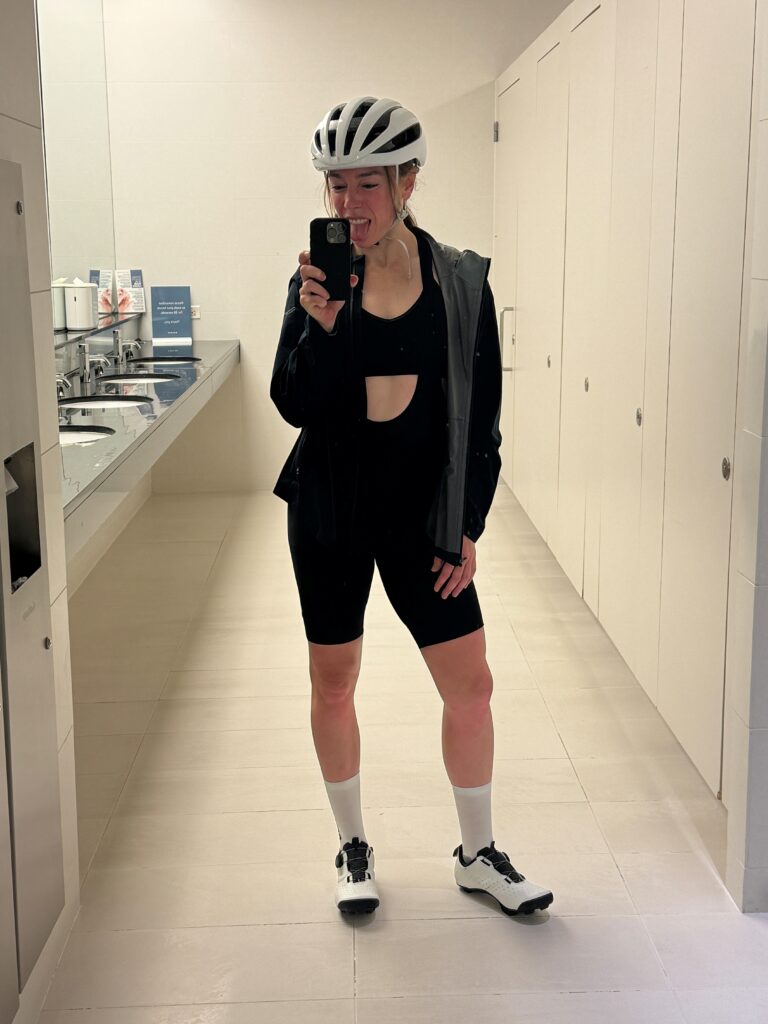
Bonus #9: If the opportunity arises, give the gift of a bicycle. Cycling is quicker than walking, greener than driving, an excellent form of exercise and a chance to enjoy the outdoors while connecting with your community.
A big thank you to my friend and CFO of Priority Bicycles, Connor Swegle, for gifting several bikes to the media company I work for. With Central Park just a block away, it wasn’t long before I tackled the big loop and uncovered a passion I never knew I had.

